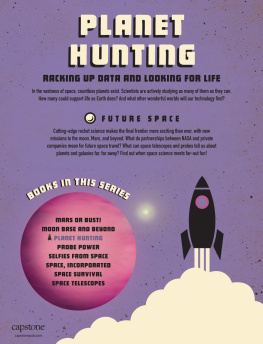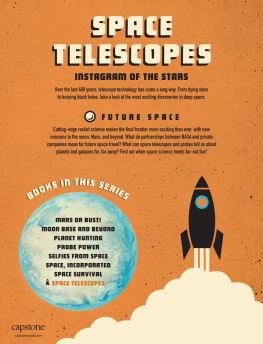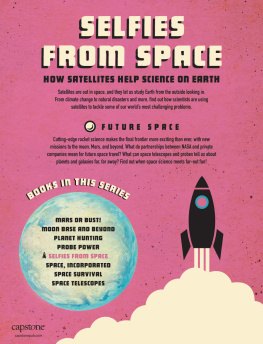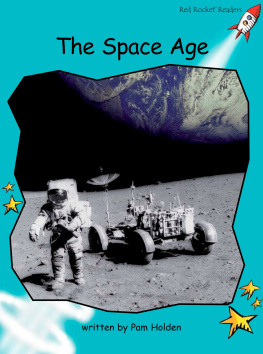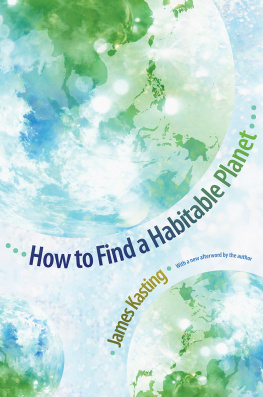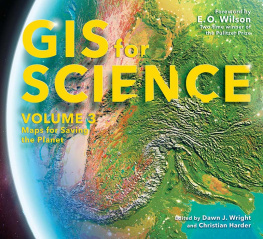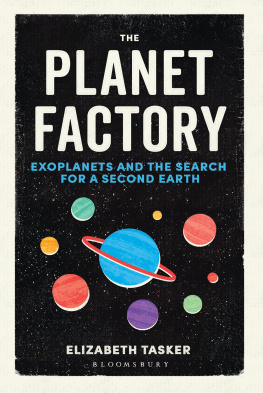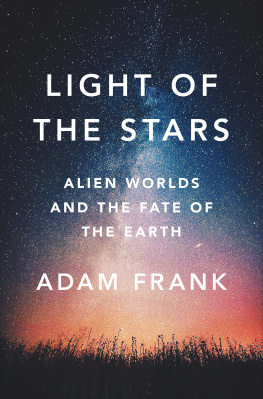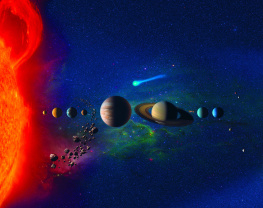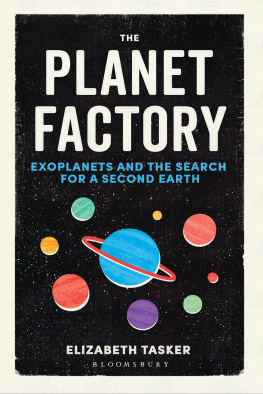Location, location, location. The planet has to be in the right place. It cant be too close to its sun, because it will be too hot for life to exist. If its too far away, the planet will be too cold.
Just right. The planet has to be about the same size as Earth. It also needs an Earth-sized to protect it from harmful radiation.
Water, water everywhere. The planet needs to have a source of water for life to survive.
SPACE FACT:
From 2009 to 2018, the Kepler Space Telescope discovered more than 2,300 exoplanets.
CHAPTER TWO
HOW TO FIND A PLANET
THE TRANSIT METHOD
Scientists find most exoplanets with the transit method. In this method, scientists use telescopes to closely watch groups of stars. The telescopes identify any exoplanets that cross, or transit, between Earth and a star.
Planets are tiny compared to stars. Even powerful telescopes cant actually see them. The planet blocks some of a stars light as it crosses. The star looks dimmer. The longer the transit lasts, the farther away the exoplanet is.
Scientists have discovered more than 3,000 exoplanets using the transit method. But the method does have its disadvantages. For example, a distant planet has to pass directly between the star and Earth for this method to be successful. Some exoplanets will never do this. That is why scientists use other methods to find exoplanets too.
Scientists use the transit method to locate exoplanets orbiting their stars.
SPACE FACT:
By using the wobble method, scientists can find out the size of an exoplanet. Bigger planets cause the stars around them to wobble more than smaller planets.
THE WOBBLE METHOD
Scientists find some keeps planets in orbit around their sun. Planets have a gravitational pull too. This pull appears to slightly move, or wobble, the planets sun.
Scientists use powerful to pick up these tiny wobbles. As the exoplanet orbits its sun, the spectrograph monitors the suns light waves. These waves are squeezed together when the sun moves closer to us. When it moves farther away, the waves stretch out. This makes the sun seem to wobble.
Scientists use the wobble method to detect an exoplanet near its star.
STAR GLARE
Using powerful telescopes, scientists can see stars that are billions of miles away. Stars send out bright rays that telescopes can detect. But exoplanets are different. They are small, dark, and produce very little light of their own. Scientists can see an exoplanet only when light from a nearby star reflects off the planets surface.
But this can cause another problem. Stars create large amounts of light. The glare from this light can make it impossible to detect a tiny planet in the darkness.
NASAs Kepler Space Telescope observed sunlike stars and planets during its mission.
DIRECT IMAGING
How do scientists avoid a stars bright glare when searching for exoplanets? One way is direct imaging. This method allows astronomers to pick up the dim light coming from the exoplanet itself. Scientists use a coronagraph in this method. This small mask is placed inside the telescope. The mask blocks out most of the starlight that comes in. The exoplanet is then visible.
Strange Systems
Not all solar systems are the same. Space telescopes have found some unusual ones. For example, the Kepler 64b solar system has one planet that orbits around two suns. Two more suns orbit around those suns.
Starshades can also be used. NASAs flower-shaped starshade unfolds like a giant umbrella in space. The starshade is placed between the telescope and a stars bright light. This lets the telescope take pictures of the actual exoplanet.
A starshade blocks light from a star so that a telescope can study exoplanets.

